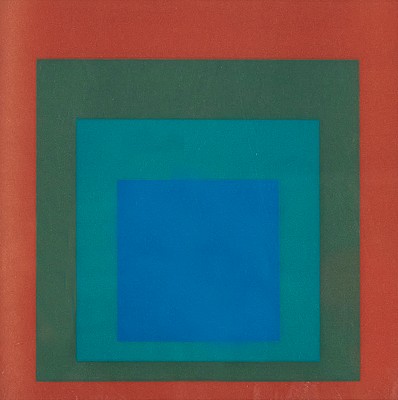Fleurieu, Charles-Pierre Claret de Voyage fait par ordre du Roi en 1768 et 1769, à différentes parties du monde, pour éprouver en mer les horloges mar
Lot 715
Absentee vs Live bid
Two ways to bid:
- Leave a max absentee bid and the platform will bid on your behalf up to your maximum bid during the live auction.
- Bid live during the auction and your bids will be submitted real-time to the auctioneer.
Bid Increments
| Price | Bid Increment |
|---|---|
| EUR€0 | EUR€10 |
| EUR€100 | EUR€10 |
| EUR€200 | EUR€20 |
| EUR€300 | EUR€30 |
| EUR€420 | EUR€30 |
| EUR€480 | EUR€20 |
| EUR€500 | EUR€50 |
| EUR€2,000 | EUR€200 |
| EUR€3,200 | EUR€300 |
About Auction
By Jeschke Jádi Auctions Berlin GmbH
Apr 29, 2022
Set Reminder
2022-04-29 07:00:00
2022-04-29 07:00:00
America/New_York
Bidsquare
Bidsquare : Rare Books, Prints, Classical Art (Auction 141)
https://www.bidsquare.com/auctions/jeschke-van-vliet/rare-books-prints-classical-art-auction-141-9237
Jeschke Jádi Auctions Berlin GmbH info@jvv-berlin.de
Jeschke Jádi Auctions Berlin GmbH info@jvv-berlin.de
- Lot Description
Fleurieu, Charles-Pierre Claret de Voyage fait par ordre du Roi en 1768 et 1769, à différentes parties du monde, pour éprouver en mer les horloges marines inventées par M. Ferdinand Berthoud. 2 Bde. Mit 5 gefalteten Karten, 1 gefalteten Tafel und 4 (von 5) gefalteten Tabellen. Paris, Imprimerie Royale, 1773. 2 Bll., LXXIX, 803 S. , 2 Bll., 622 S., XL. 4°. Gefleckte Kalbldr. d. Zt. mit reicher RVergoldung und RTitel, Rotschnitt, Marmorvosätze (berieben und beschabt, Gelenke angeplatzt, Kapitale mit Läsuren). Sabin 24750. - Die Karten zeigen u.a. die Kanarischen und die Kapverdischen Inseln und die Azoren. - Seltenes Werks über den Wettlauf um die Berechnung des Längengrades. Ferdinand Berthoud, Pierre Le Roy und John Harrison wetteiferten darum, den besten Marinechronometer zu erhalten. Fleurieu war ein wichtiger Teil der Seekampagne, die Berthouds ersten Marinechronometer testete. Frankreich versuchte Großbritannien im Wettlauf um die beste Methode zur Berechnung des Längengrads zu überholen. Fleurieu und Berthoud begaben sich von 1768 bis 1769 auf der Fregatte Isis unter Fleurieus Kommando auf eine Testexpedition. Die Chronometer zeigten nach dem Verlassen des Hafens fast ausnahmslos die Uhrzeit so genau an, als ob sie sich noch an Land befänden. Da sie die tatsächliche Ortszeit an jedem aktuellen Standort durch die Astronomie kannten, konnten sie die genaue Position des Schiffes und den Längengrad auf einer Karte leicht bestimmen. Mit Hilfe von Berthouds Chronometer konnte Fleurieu zum ersten Mal die genaue Position der von ihm angelaufenen Häfen berechnen. Die Ergebnisse ihrer Beobachtungen wurden in diesem Werk veröffentlicht. - 4 Karten lose beiliegend. Papierbedingt gebräunt, stellenweise stärker. Vereinzelt mit kl. Braunflecken. Titelbll. leimschattig. Insgesamt gute Exemplare. 2 vols. With 5 folded maps, 1 folded plate and 4 (of 5) folded tables. Mottled calf, gilt spine decorations, red edges, marbled endpapers (rubbed and scuffed, joints chipped, capitals worn). - The maps show among others the Canary and Cape Verde Islands and the Azores. - Rare work on the race to calculate longitude. Ferdinand Berthoud, Pierre Le Roy and John Harrison competed to obtain the best marine chronometer. Fleurieu was an important part of the naval campaign that tested Berthoud's first marine chronometer. France was trying to overtake Britain in the race to find the best method of calculating longitude. Fleurieu and Berthoud went on a testing expedition from 1768 to 1769 on the frigate Isis under Fleurieu's command. After leaving port, the chronometers almost invariably showed the time as accurately as if they were still on land. Since they knew the actual local time at each current location through astronomy, they could easily determine the exact position of the ship and the longitude on a map. With the help of Berthoud's chronometer, Fleurieu was able for the first time to calculate the exact position of the ports he was calling at. The results of their observations were published in this work. - 4 maps loosely enclosed. Paper browned, stronger in places. Occasionally with small brown spots. Title pages with glue shadows. Overall good copies.
- Buyer's Premium



 EUR
EUR CAD
CAD AUD
AUD GBP
GBP MXN
MXN HKD
HKD CNY
CNY MYR
MYR SEK
SEK SGD
SGD CHF
CHF THB
THB




